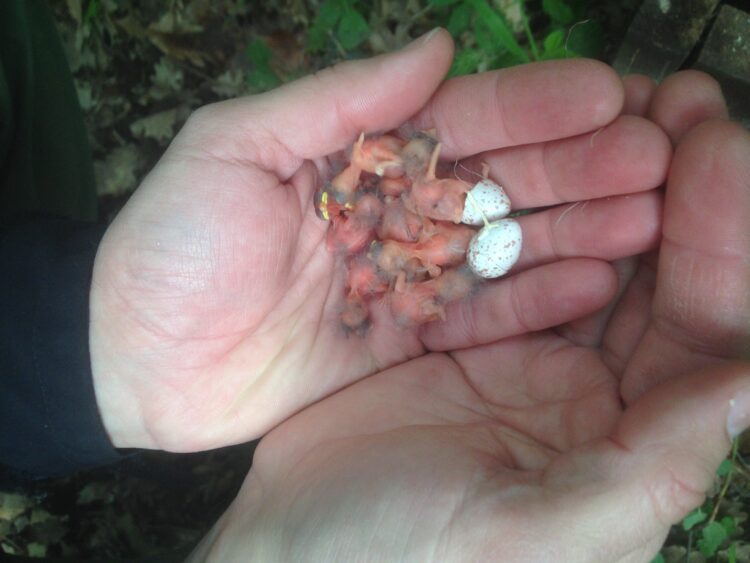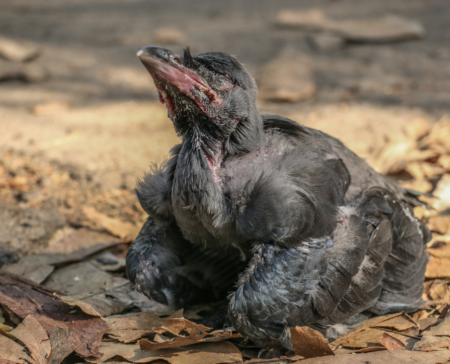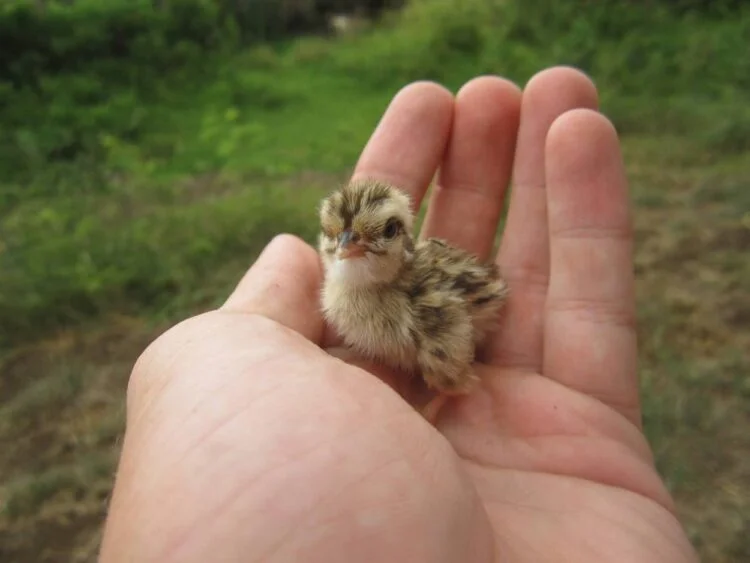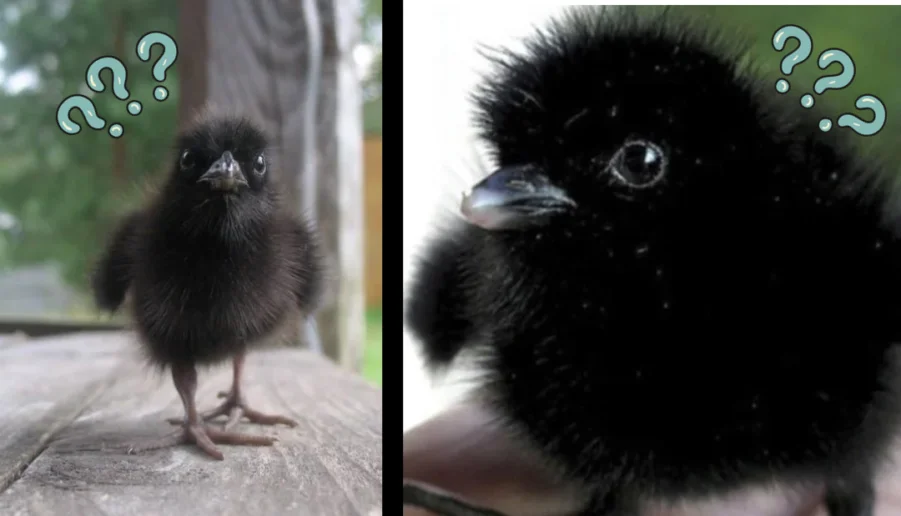
Pictures of a “baby crow” have been all over Pinterest and Reddit for a couple of years now, winning hearts with their poofy goth aesthetic. Notably not a single nature account is involved in all the sharing. Meanwhile, some experts have specifically highlighted that something’s wrong here.
You guessed it: this isn’t what a baby crows look like at all. The chick shown above is actually from the Rail family (Rallidae), an ancient and secretive bird family that is only very distantly related to the crow family (Corvidae). In other words, not only is this little guy definitely not a crow, it’s not even close! So what does an actual baby crow look like? For starters, it’s worth learning some terminology about baby birds. This will help you distinguish between bird chicks when you see them in the wild—or while browsing social media.
Baby Birds Come in Stages

Ornithologists (scientists who study birds) use a lot of different terms to describe young birds. These come in order of the bird’s growth since hatching from an egg (as all birds do!). Some of the most common terms, in order of age, include:
- Hatchling – babies that have just hatched
- Nestling – babies that are a couple of days old, but still in the nest
- Fledgling – babies that have left the nest, and may be learning to fly. These are the ones you’ll most often come across outside!
- Juvenile – young birds that don’t look like adults yet (they still have their baby feathers)
- Hatch-year – a bird that is still within one year of its hatching date (in other words, its birthday)
The more general term chick refers broadly to baby birds at the nestling and hatchling stage, but less often to fledglings. When chicks leave the nest (sometimes before they can even fly!) they become fledglings. Young birds are still called juveniles until they molt into adult plumage. This means that they shed their crummy baby feathers and replace them with feathers that resemble adults of their species.
Altricial vs. Precocial
Another important distinction—especially relevant for baby crows—is the difference between altricial and precocial chicks.

Altricial Young
Altricial baby birds are more like newborn humans when they hatch. That is, pink, squishy, and totally helpless. I’ve heard people describe the altricial hatchlings of some bird species as “giant gummy bears” and I have to admit its accurate. Altricial young need to be fed and cared for by their parents while staying within the safety of the nest.

Their eyes are often closed for a couple days, and they can’t really walk or of much of anything. Their feathers are just starting to come in even after a few days, making them look particularly disheveled. Bad hair days are about as good as it gets.
Altricial young will eventually fledge and molt into adult plumage, looking a little better at each stage. However, they’re reliant on their parents to feed them for their first several months of life. Songbirds (Passeriformes), crows and jays (Corvidae), hawks and eagles (Accipitriformes), and parrots (Psittaciformes) all have altricial babies.
Found a baby bird in your backyard? Check out my post on What to do if you find a baby bird to see how, and if, you can help. It’s also worth checking out what to do about bird nests in your yard, and how to attract birds to your yard.
Precocial Young
By contrast, precocial chicks are ready to rock, sometimes even just a couple hours after hatching. With a few exceptions, they hatch covered in fluffy down feathers, resulting in maximum cuteness. Most precocial young are adorable puffballs by their first day of life in the outside world.
They are also able to walk and run, so they leave the nest quickly. Precocial chicks will more often be seen following one of their parents around. They’re often fed by their parents for a few days to a week, and can quickly feed themselves. Ducks and geese (Anseriformes), cranes (Gruidae), rails (Rallidae) and many gamebirds like turkeys and pheasants (Phasianidae) have precocial young.

So what does a baby crow look like?
You’ve probably picked up on the fact that this depends on the chick’s age! If we’re counting any kind of chick as a ‘baby’, the answer is: pretty ugly. Crows can’t help that they have altricial babies, and its not their fault that their chicks look pretty awful. Like other altricial bird babies, crows transition from ugly to goofy as they near fledging age. Within a year or so of hatching they should look more or less like an adult. Whether or not they go through a phase as cute as precocial chicks is probably up for debate.
Although still images of actual baby crows are surprisingly hard to come by, there’s plenty of fun footage of them on Youtube. Here are some that will give you a better idea on actual baby crows:
This next one actually shows a brood of House crows (Corvus splendens), a relative of the American crow, growing up in a nest in Chennai, India.
Thanks for reading about baby crows!
If you enjoyed this post, please support Gulo in Nature and share it with friends and on Social Media. Have you come across other images, memes, or nature “facts” that you’re wondering about? I’d love to have a look at them. Let me know via the Contact page!

